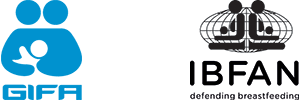
Tuesday 26 November 2024, 1-3pm. GIFA Breastfeeding afternoon: Breastfeeding and complimentary feeding (online training) in FRENCH
Dr Hélène Leyder, paediatrician
Participate in the Zoom Meeting https://us02web.zoom.us/j/81692263686
Meeting ID: 816 9226 3686
No registration required. To obtain a certificate and/or 2 e-log points, pay CHF 10 to GIFA.
Why talk about diversification?
The WHO recommends exclusive breastfeeding up to around 6 months, followed by continued breastfeeding and the introduction of solids until the child is 2 years old or beyond.
The transition from exclusive breastfeeding to complimentary feeding while continuing to breastfeed, raises a number of questions. Parents are often at a loss, especially with their first child.
How do you know when a child is ready for solids?
In fact, at around 6 months, most babies start to show signs that they are ready to eat solid foods:
- Your baby is holding his head well
- He or she can sit up on his own
- He or she can grasp food between his thumb and forefinger and bring it to his mouth
- He or she no longer has the protrusion reflex (protective reflex of the tongue that pushes food out of the mouth in toddlers).
Generally speaking, during the first 6 months, the volume of breast milk required per day by a baby who is exclusively breastfed varies between 750 and 1035 ml.
Some authors claim that between 6 and 9 months, the amount of breast milk should remain more or less the same, while the amount of solid food gradually increases.
Then, from around 9 months, most infants begin to reduce their milk intake, with solid foods becoming a more important part of their diet.
